Quality leads are invaluable for businesses in the home improvement industry. With multiple marketing strategies available, it can be challenging to determine the best approach. Two popular strategies, paid advertising and organic marketing, have distinct advantages and drawbacks. This article will explore both approaches, compare their effectiveness, and help determine which strategy may be better suited for home improvement lead generation.
What Are Paid Ads?
Paid ads involve promoting services or products through various paid channels, including search engines, social media platforms, websites, and mobile apps. These ads appear prominently in search results, feeds, or relevant web pages, helping businesses increase visibility and engagement. Common formats include pay-per-click (PPC) ads, display ads with images or videos, and sponsored posts on Facebook, Instagram, and LinkedIn.
Businesses may pay based on different models, where they’re charged if users click on the ad, or CPM (cost per thousand impressions), which focuses on how often the ad is displayed to users. Paid advertising allows companies to quickly reach their target audience by utilizing detailed targeting options, including demographics, interests, location, and online behavior.
Types of Paid Ads Used
- Search Engine Ads: PPC ads appear at the top of search engine results pages (SERPs) based on relevant keywords.
- Social Media Ads: Platforms like Facebook, Instagram, and Pinterest allow businesses to run ads targeting specific demographics.
- Display Ads: These visual ads appear on websites that are part of an advertising network and are often designed to create awareness and capture leads.
- Local Service Ads: Google’s Local Services Ads are tailored for local businesses, including home improvement companies, helping generate leads within a specific area.
Advantages
- Immediate Results: Paid ads generate leads quickly since they appear instantly in front of potential customers.
- Targeted Advertising: Businesses can tailor ads to specific demographics, locations, or interests, improving conversion rates.
- Scalable Campaigns: Companies can control how much they spend and adjust campaigns based on performance.
- Increased Brand Visibility: Paid ads can boost brand awareness, especially when targeting competitive markets.
Disadvantages
- High Costs: Paid advertising can become expensive, especially for competitive keywords or extended campaigns.
- Temporary Impact: Ads generate traffic only while the campaign is active, meaning leads may drop off when the budget runs out.
- Ad Fatigue: Consumers may become less responsive to repetitive ads, reducing effectiveness over time.
- Constant Optimization Needed: Paid campaigns require continuous monitoring to maintain performance and avoid wasted spend.
What Is Organic Marketing?
Organic marketing focuses on unpaid efforts to enhance brand visibility, build meaningful connections, and attract potential customers. It relies on strategies such as content creation, search engine optimization (SEO), social media engagement, and community-building initiatives. Unlike paid campaigns, organic marketing emphasizes developing trust and awareness over time by consistently offering valuable information, insights, and solutions that resonate with the audience’s needs.
Content is central in this approach, ranging from blog posts, videos, and infographics to newsletters and podcasts. Optimizing this content for search engines through SEO techniques ensures that it ranks higher in search results, making it easier for potential customers to discover the brand naturally. Organic marketing also involves engaging with followers through social media channels, responding to inquiries, participating in conversations, and sharing user-generated content to foster a sense of community.
Examples of Organic Marketing Strategies
- Search Engine Optimization (SEO): Optimizing website content for specific keywords helps businesses rank higher in search results.
- Content Marketing: Blogs, videos, and infographics educate potential customers and establish the business as a credible resource.
- Social Media Engagement: Sharing relevant content and engaging with followers organically builds trust and brand awareness.
- Email Marketing: Collecting leads and sending newsletters or promotions keep the audience engaged without advertising spend.
Advantages
- Cost-Effective: More often than not, organic marketing efforts are less expensive since they don’t rely on ad spend.
- Long-Term Results: Content and SEO efforts continue to drive traffic, even long after they are implemented.
- Builds Trust: Organic content fosters credibility and establishes the business as a thought leader in the industry.
- Better Engagement: Content that resonates with audiences generates higher engagement and can encourage word-of-mouth referrals.
Disadvantages
- Takes More Time: Organic marketing requires consistent effort and can take months to show significant results.
- Unpredictable Algorithms: Changes to search engines or social media algorithms can impact visibility without warning.
- High Effort: Creating high-quality content and maintaining engagement requires significant resources.
- Less Control Over Audience: Organic efforts rely on audience discovery, which can be slower than targeted ads.
When to Use Paid Advertising
Paid advertising is ideal when businesses need quick results, such as promoting seasonal services, time-sensitive discounts, or new offerings. It also works well for companies looking to launch new campaigns or generate leads rapidly in a competitive market. For instance, a home improvement business offering emergency plumbing services can benefit from Google Ads to appear at the top of search results when homeowners need immediate assistance.
Paid ads are also helpful when targeting a particular audience. Platforms like Facebook allow businesses to segment audiences based on interests and location, ensuring ads reach homeowners needing specific services, such as kitchen renovations or window replacements.
When to Use Organic Marketing
Organic marketing is more suitable for long-term strategies focused on building brand awareness and customer trust. Home improvement businesses that offer services requiring significant customer research, such as solar panel installations, can benefit from SEO-optimized content and educational blog posts.
This approach is ideal for companies looking to establish authority within their industry. By consistently producing valuable content, businesses can rank higher on search engines and become a go-to resource for homeowners. Organic marketing shines when a company aims to engage with its audience and foster long-term relationships through social media platforms.
Key Differences Between Paid Ads and Organic Marketing
| Aspect | Paid Ads | Organic Marketing |
| Cost | High, with continuous spending needed | Low, but requires time and effort |
| Speed of Results | Immediate | Slow, with results over time |
| Lifespan of Impact | Ends when the campaign stops | Ongoing with minimal upkeep |
| Audience Targeting | Precise and customizable | Broad, based on search and engagement |
| ROI | Depends on campaign performance | Improves over time with consistent effort |
Creating a Balanced Lead Generation Strategy
For optimal results, consider combining both paid advertising and organic marketing. A balanced home improvement marketing strategy maximizes lead generation by leveraging the strengths of each method while mitigating its limitations.
- Define Clear Goals: Start by setting specific, measurable goals. For example, determine how many leads you need per month or what percentage of sales you want to achieve through organic efforts versus paid campaigns.
- Allocate Budget and Resources Wisely: Divide your budget between paid ads and organic efforts based on priorities. Use paid ads for immediate results while investing in content creation and SEO for long-term success.
- Use Paid Ads to Amplify Organic Content: Leverage paid ads to promote your top-performing organic content. For example, boost a popular blog post about kitchen renovations or promote a social media post that showcases recent projects.
- Monitor Analytics and Adjust Strategies: Track the performance of both paid and organic campaigns. Use data insights to refine your approach, focusing on what generates the most leads and offers the best ROI.
- Maintain Consistency Across Channels: Make sure your messaging is consistent across paid and organic channels. This creates a seamless brand experience for potential customers and reinforces trust.
- Experiment with A/B Testing: Test different ad creatives and organic content formats to identify what resonates best with your audience. Continuously refining your strategy based on test results improves overall performance.
Final Thoughts
People in the home improvement industry must carefully weigh the pros and cons of paid advertising and organic marketing when developing lead-generation strategies. Paid ads offer speed and precise targeting but require ongoing investment. On the other hand, organic marketing builds authority and long-term visibility but demands consistent effort.
Understanding the strengths and limitations of both approaches is key to developing an effective lead-generation strategy. Paid advertising may be the right choice when you need quick results for time-sensitive campaigns or promotions. At the same time, organic marketing is an investment that builds credibility and nurtures lasting customer relationships in the long run.
Ultimately, a balanced strategy that integrates paid and organic efforts ensures you leverage the best of both worlds. This hybrid approach maximizes your lead-generation potential, boosts your return on ROI, and keeps your business afloat.
Start Generating Leads
Do you want to learn how to get leads for your business? We at Integrity Mindset Group can help you develop customized lead-generation strategies that align with your business goals. Whether you’re looking to boost immediate sales through targeted paid ads or build long-term brand authority with organic marketing, we’ve got you covered.
By partnering with us, you can transform your leads into loyal customers. Our expert team is committed to creating campaigns that fit your budget and industry needs, ensuring you stay ahead of the competition. We will guide you through every step—from strategy development to execution—so you can focus on growing your business.
Contact us to boost your visibility, attract quality leads, and drive sustainable growth today.


